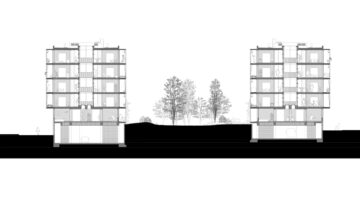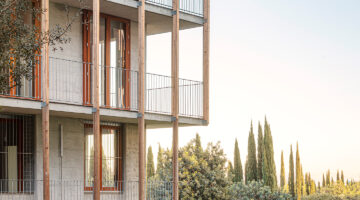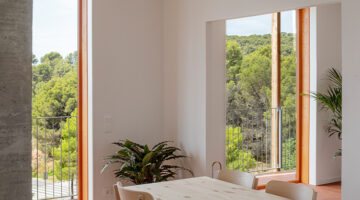





Viviendas sociales 1737 (Gavà, Barcelona)
Main objectives of the project
The innovative social housing project by H Arquitectes in Gavá, near Barcelona, demonstrates Catalonia's commitment to low-cost, high-quality housing. Adapted to a triangular plot, the building avoids dead-end corners and offers panoramic views. Apartments feature four adaptable modules and a hybrid structural system for efficiency. Exterior transitions include balconies and glazed galleries, leading to a central atrium that provides natural light and ventilation. With 136 units, the project, backed by IMPSOL, aligns with regional efforts to address housing shortages.
Date
- 2022: Construction
- 2017: Ganador
Stakeholders
- Promotor: IMPSOL
- Architect: H Arquitectes
Location
City:
Country/Region: Barcelona, Spain
Description
In recent years, Catalonia has been increasing its public social housing stock with extraordinary low-cost projects. A good example of this architectural excellence is the project by H Arquitectes in Gavá, a small coastal town a few kilometres from Barcelona, between the Garraf massif and the Llobregat delta. The building adapts to the perimeter of a complicated, triangular-shaped plot, breaking the continuity at the corners to avoid dead-end corners that could generate situations of insecurity. In this way, a plot with excellent views and pleasant surroundings is achieved. The building is developed through a system of aggregation that maximises the relationship between the living spaces and the surroundings. All the rooms are exterior and have views of the Ferreres mountain range and the Llobregat Agricultural Park, an area of great environmental interest.
Each dwelling consists of four equal modules of 10.6 square metres, which can be used as living room, kitchen or bedroom. A hybrid structure of screens and concrete slabs separating the dwellings, combined with slender pillars that allow very short and efficient spans, while characterising the space of each room. On both sides of these modules, there are two bands of transition to the exterior: a balcony facing the street and a glazed gallery - where the bathrooms and storage space are located, which can also be attached to the living rooms - towards an atrium where the circulations and vertical communication cores of the whole complex are resolved. Thus, all the spaces have plenty of natural light and cross ventilation.
As explained above, three continuous rings are configured: terrace, programme and circulation, leaving the vertical communication cores inside the atrium. In this way, there are no corridors. The central atrium is a protected and slightly tempered space that ventilates the stairs and makes the dwellings more comfortable. The staircases are very compact and serve four dwellings per landing, giving a total of 136 dwellings.
As for the governance of the project, it is promoted by IMPSOL, Barcelona's public metropolitan developer. Thus, the project is part of a strategy of the city as a whole, together with its adjacent municipalities, to address the growing housing crisis that is being experienced.
The building has been largely awarded: Matilde Baffa Ugo Rivolta 2023 European Award, Shortlisted ‘EU Mies Van der Rohe Award 2024’, ‘III Premis Temps de les Arts’ 2023, Premio ex aequo ‘Premio ENOR 2023’, Premio FAD de la opinión 2023, Finalist "Premios FAD 2023", "Premio en la Bienal Española de Arquitectura y Urbanismo ‘BEAU XVI’ 2023"

